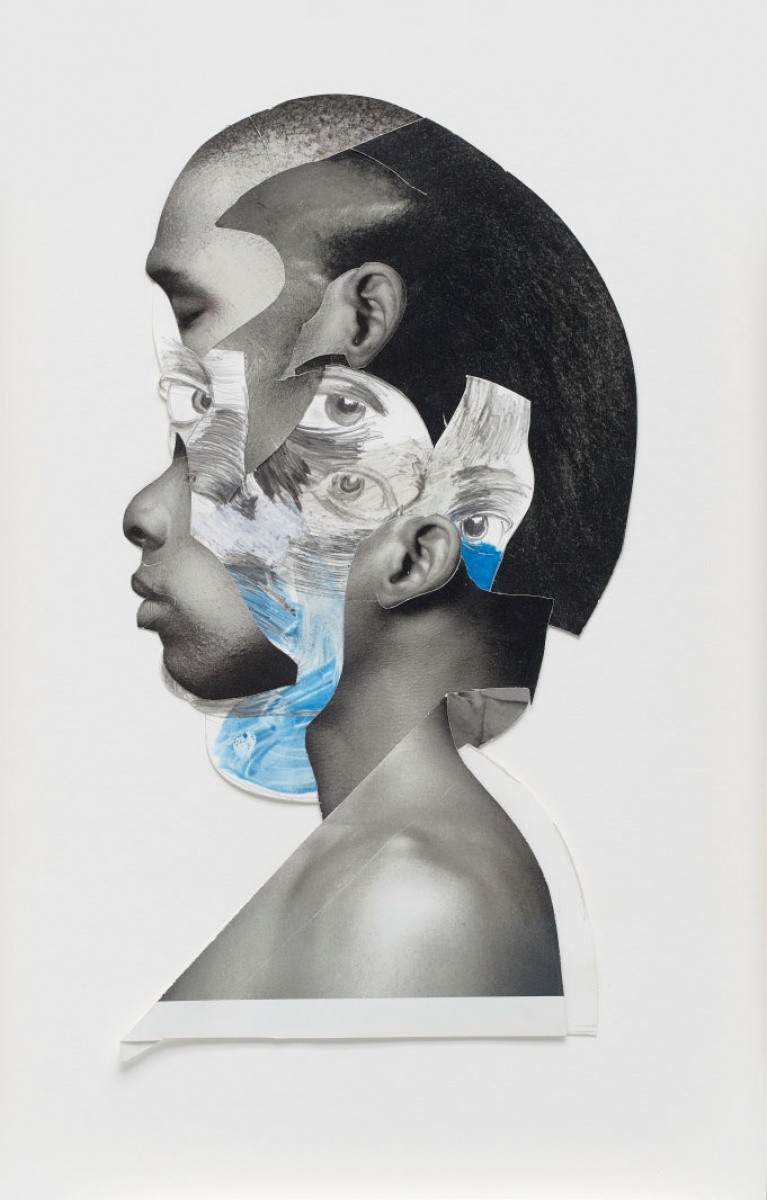Constant oscillation
African-American artist Wardell Milan shares insights about his captivating series, Parisian Landscapes (2013 - 2019). Two works from this series are included in the AGO exhibition Dawoud Bey, John Edmonds, Wardell Milan.

Wardell Milan, Michael Ross, 2018. From the series Parisian Landscapes (2013–2019). Printed paper, gelatin silver prints, watercolour, and graphite, 40.6 x 26.4 cm. Art Gallery of Ontario, Purchase, with funds from the Photography Curatorial Committee, 2019. © Wardell Milan 2019/2250.
For many, this chaotic and eventful year has prompted deep self-reflection. And, sometimes looking in the mirror can uncover complex, even contradictory, truths about one’s sense of self. African-American artist Wardell Milan explores these ideas of identity and personhood – with all their contradictions – in unique, challenging ways.
Two works from Milan’s acclaimed series Parisian Landscapes (2013 ̶̶ 2019) are included in the AGO exhibition Dawoud Bey, John Edmonds, Wardell Milan. In them, Milan layers and collages photographs, elements drawn or painted with pencil, watercolour and acrylic, and even resin, as he reimagines images from photographer Robert Mapplethorpe’s controversial 1986 Black Book of erotic portraits and figure studies. Parisian Landscapes considers the lives of the men originally photographed for Black Book, humanizing them with depth and complexity in a way that many of Mapplethorpe’s critics say he did not.
Milan told us more about Parisian Landscapes and his practice at large.
AGOinsider: Duality is a theme that reappears in much of your work. What inspires you to keep exploring it?
Milan: Duality is a concept of negotiation that we always have within ourselves. I like having to sit in between the two opposites, fluctuating in that tension and am interested in things that approach each other obliquely. For example: when people are eating outside at restaurants while the [Black Lives Matter] protests are happening. I want to be a part of these protests, part of the movement, and also sometimes I just really need a cocktail. Duality is owning what that means as a person who has a certain level of access and choosing when I want to tap into that riot call. When I think about duality, I think about this constant oscillation between these two things.
AGOinsider: You’ve mentioned that when using Mapplethorpe’s Black Book as source material for Parisian Landscapes, it was important for you to deeply “consider the lives” of the men that were photographed. What were some of the things you considered, and how did those things inform the look of the series?
Milan: I was thinking even now, while in a new public health crisis, about those men’s lives and the community they belonged to and what gifts/contributions the Black gay community in New York gives to each other and culture at large. What happens in the absence of those men [lost to the AIDS or the crack epidemic]? What could they have contributed and gifted to their small communities and the larger cultural world? What was lost? I am re-imagining what their descendants could’ve been like, but also how I relate to them as a descendent as well.
AGOinsider: You utilize so many different mediums. Can you describe your process for conceptualizing the form of a piece you’re working on?
Milan: The subject matter dictates the ways and forms in which it is created. I try to let the ideas and topic dictate how it wants to be visualized. A collage can only do so much before it needs to be a sculpture, moving image, a different medium to evoke certain responses. I started off as a draftsman, even in grad school I painted and drew while studying photography in school. There is a certain level of freedom with allowing a drawing to influence or form a photographic body of work - the freedom to include photographic images whether it be mine or one from a Google search and seeing it become a part of a drawing. I try to eliminate rules of what can and cannot be done by allowing the mediums to fraternize and congregate in a very fluid way.
AGOinsider: As an artist creating work largely about the Black experience, how have this year’s events surrounding the global movement for Black lives impacted your practice?
Milan: I don’t see myself as an artist creating works largely about the Black experience. It’s encouraging to see the global impact of the Black Lives Matter movement and the ways in which it has affected communities who may have been less aware or conscientious of the demands from the movement itself. My hope is that the Black Lives Matter movement continues to grow and continues to be an agent of social and political change.
Dawoud Bey, John Edmonds, Wardell Milan is located on Level 1 in the Robert & Cheryl McEwen Gallery (Gallery 129) at the AGO. You'll be able to see this exhibition when the Gallery reopens.
Are you an AGOinsider yet? If not, sign up to have stories like these delivered straight to your inbox every week.
